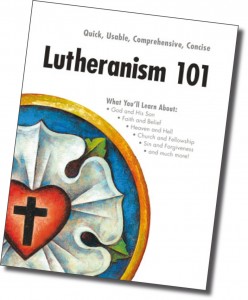Dom Mark Daniel Kirby, OSB, has an interesting post up on his blog, On the Psalmody of the Divine Office, which was originally an address he gave to the National Assembly of the Conference of Major Superiors of Women Religious. (One should bear this context in mind in case one wonders why Fr. Kirby is particularly focused upon the Divine Office in relation to clergy and religious. But what Father has to say has much value and fruit for the laity who pray the Divine Office, as well as for pastors who wish to bring sung Vespers to their parishes.)
Here are some excerpts. We pick up the article midstream: Psalmody
In order to respond effectively to the liturgical vision of religious life articulated by Pope Benedict XVI, I will focus on the single most important element of the Divine Office in its various forms: the recitation of the Psalter.
[...]
 The psalms, inspired by the Holy Spirit and entrusted to the Children of Israel in view of the day when Christ Himself and, after Him, His Bride, the Church, would pray them, are lyrical poems expressing every sentiment of the human heart, and directing those sentiments Godwards. The psalms are, at once, universal and personal. Rowland E. Prothero, writing over a hundred years ago, says: The psalms, inspired by the Holy Spirit and entrusted to the Children of Israel in view of the day when Christ Himself and, after Him, His Bride, the Church, would pray them, are lyrical poems expressing every sentiment of the human heart, and directing those sentiments Godwards. The psalms are, at once, universal and personal. Rowland E. Prothero, writing over a hundred years ago, says:
"The Psalms are a mirror in which each man sees the motions of his own soul. They express in exquisite words the kinship which every thoughtful heart craves to find with a supreme, unchanging, loving God, who will be to him a protector, guardian, and friend. They utter the ordinary experiences, the familiar thoughts of men; but they give to these a width of range, an intensity, a depth, and an elevation, which transcend the capacity of the most gifted."
[...]
Chanting the Evangelical Counsels
Choral psalmody resembles, at more than one level, the virtues corresponding to the three vows of religion: poverty, chastity, and obedience. It gives corporate expression to the evangelical counsels and, at the same time, impresses them, day after day, more vividly in the heart.
Poverty: the melodic formula draws upon very limited musical resources. Recto tono has but a single note. Modal psalm tones are limited to a certain number of closely related notes and combinations. By resolutely choosing to pray within the limitations of a certain tonal poverty, one enters sacramentally into "the grace of our Lord Jesus Christ, who being rich, became poor, for our sakes; that through his poverty we might become rich" (cf. 2 Corinthians 8:9).
Chastity: the psalmody of the Divine Office is chaste when it abstains from drawing attention to itself. In liturgical psalmody there is nothing that seeks to entertain, to charm, or to possess. One who surrenders to this form of prayer day after day assimilates its attributes. Choral psalmody fosters chastity; it is a school of purity of heart. Rightly does the psalmist pray: Eloquia Domini, eloquia casta, "The words of the Lord are chaste words" (Psalm 11:7).
Obedience: liturgical psalmody is obedient to the sacred text. It obeys the natural accents and verbal harmonics of the inspired Word of God, embracing it, espousing it, and remaining within the limits that it defines. The musical treatment of the psalmody is an ecclesial expression of Our Lady's response to the Archangel Gabriel in the mystery of the Annunciation: "Be it done unto me according to Thy Word" (Luke 1:38).
The psalmody of the Hours, executed in organic continuity with the Church's tradition of choral prayer, fosters the evangelical virtues in an almost imperceptible but entirely effective way. Just as one becomes what one contemplates, so too does one become what one sings. The psalmody of the Divine Office, held in honor by the Church for centuries, is a humble but strong support of the vowed life.
[...]
Through Psalmody to the Trinity
... I should like to return to the core of my thesis: that the psalmody of the Divine Office is a path to holiness for the apostolic religious. The Fathers of the Church have reflected on why and how psalmody engenders interior dispositions favorable to contemplative prayer.
A community engaged in choral prayer is an image of the Mystical Body as defined by Saint Augustine: "one Christ loving Himself." One-half of the choir offers its verse, not only to God through Christ, but also offers the bread of the Word to those of Christ's members who form the other half of the choir. In choral psalmody, the daily bread of the Word is continuously offered and received as it passes from choir to choir, providing believers with a compelling image of one Christ feeding Himself and, by means of that food, uniting His members among themselves, and to Himself, the Head of His Mystical Body. This Eucharistic dimension of the Divine Office is, in its own way, a means of communion with the ceaseless prayer that Christ, Eternal High Priest, offers to the Father in the Holy Spirit.
 Saint Ambrose Saint Ambrose
Saint Ambrose of Milan, rather unexpectedly, in his meditation on the six days of creation, refers to alternation of two choirs when, in a poetic vein, he compares the beauty and the beneficial effect of psalmody to the creation of the sea:
"How beautiful and mighty is the sea when the tempest raises her waves. Even more beautiful is she when nothing apart from a light breeze moves over the surface of the waters and her waves break upon the shore with a sound that is gentle, regular, and harmonious, a sound that does not trouble the silence but is happy, rather, to give it rhythm and to render it audible."
Saint Ambrose, in effect, describes the ideal of liturgical psalmody: a sound that does not trouble the silence but rather gives it rhythm and renders it audible. He goes on to say:
"What else is that melodic sound of the waves if not the melody of the people . . . as the whole people unite in prayer, there is a whisper of receding waves; the echo of the psalms when sung in responsive harmony by men and women, maidens and children is like the sound of breaking waves. Wherefore, what need I say of this water other than it washes away sin and that the salutary breath of the Holy Spirit is found in it?"
By comparing liturgical psalmody to a peaceful breaking of waves upon the shore, Saint Ambrose suggests that each wave receives movement from the other and renders movement in return, sustaining all the while a continual rising and receding that remains ineffably tranquil.
[...]
 Saint Basil Saint Basil
In his Exegetic Homilies, Saint Basil the Great profits from his exposition of Psalm 1 to set forth the benefit of all psalmody. Describing the Sacred Scriptures as a general hospital for souls, he demonstrates the outstanding curative and therapeutic effects that are proper to the Psalter.
[...]
Saint Basil emphasizes the medicinal and formative properties of psalmody. It is clear from the following passage that the psalmody of the Divine Office is an integral and indispensable element in the initial formation to the vowed life and at every subsequent stage of it.
"When, indeed, the Holy Spirit saw that the human race was guided only with difficulty toward virtue, and that, because of our inclination toward pleasure, we were neglectful of an upright life, what did He do? The delight of melody He mingled with the doctrines so that by the pleasantness and softness of the sound heard we might receive without perceiving it the benefit of the words, just as wise physicians who, when giving the fastidious rather bitter drugs to drink, frequently smear the cup with honey. Therefore, He devised for us these harmonious melodies of the psalms, that they who are children in age or, even those who are youthful in disposition might to all appearances chant but, in reality, become trained in soul."
The psalmody of the Divine Office prepares the soul for union with God by purifying the emotions, by ordering the passions rightly, and by fostering charity, apart from which there is no authentic contemplation. Psalmody accompanies the soul through the purgative, illuminative, and unitive phases of the interior life. At no moment in one's spiritual journey does it become superfluous or redundant.
"A psalm implies serenity of soul; it is the author of peace, which calms bewildering and seething thoughts. For, it softens the wrath of the soul, and what is unbridled it chastens. A psalm forms friendships, unites those separated, conciliates those at enmity. Who, indeed, can still consider as an enemy him with whom he has uttered the same prayer to God? So that psalmody, bringing about choral singing, a bond, as it were, toward unity, and joining the people into a harmonious union of one choir, produces also the greatest of blessings, charity."
Here, Saint Basil adopts a lyrical style worthy of the psalms themselves. His teaching makes clear the value of choral psalmody not only in the context of an enclosed monastic life, but also in the context of apostolic religious life in all its expressions.
"A psalm is a city of refuge from the demons; a means of inducing help from the angels, a weapon in fears by night, a rest from toils by day, a safeguard for infants, an adornment for those at the height of their vigor, a consolation for the elders, a most fitting ornament for women. It peoples the solitudes; it rids the market place of excesses; it is the elementary exposition of beginners, the improvement of those advancing, the solid support of the perfect, the voice of the Church. It brightens the feast days; it creates a godly sorrow. For, a psalm calls forth a tear even from a heart of stone."
Finally, Saint Basil presents psalmody as a school of the moral virtues: courage, justice, self-control, prudence, penance, and patience. The Psalter is, for the great legislator of the common life a perfect, that is to say, a complete theology.
"A psalm is the work of angels, a heavenly institution, the spiritual incense. . . . What, in fact, can you not learn from the psalms? Can you not learn the grandeur of courage? The exactness of justice? The nobility of self-control? The perfection of prudence? A manner of penance? The measure of patience? And whatever other good things you might mention? Therein is perfect theology, a prediction of the coming of Christ in the flesh, a threat of judgment, a hope of resurrection, a fear of punishment, promises of glory, an unveiling of mysteries; all things, as if in some great public treasury, are stored up in the Book of Psalms."
|













